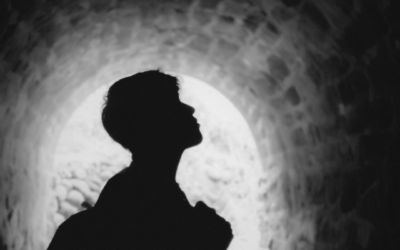In the heart of Las Ramblas, the Gran Teatre del Liceu stands as one of Europe’s most iconic opera houses. Its history, marked by artistic splendour and the vicissitudes of time, holds more than just music and talent behind the scenes. For decades, the Liceu has been known not only for its exceptional acoustics and varied programme, but also for the echoes of a disturbing presence that, according to popular tradition, still haunts its corridors.
The supposed ghost of the Liceu has generated equal parts fascination and fear. It is a legend deeply rooted in the Barcelona’s imagination, linking the curse of the site with the successive fires, attacks and misfortunes that have punctuated its existence since the 19th century.
In this article, we will delve into the origins of this supernatural story, review the episodes that fuelled the myth and explore why, even today, many people still talk about the spirit that is said to inhabit the Liceu. Dare to experience this mysterious phenomenon first-hand by travelling to Barcelona with Shuttle2Sun‘s low-cost and sustainable shared transfer services and private transfer services from Barcelona Airport, Barcelona Port, Girona Airport, Reus Airport and Camp de Tarragona AVE train station.
A Theatre with History
The Gran Teatre del Liceu opened its doors on the 4th of April 1847 as a private initiative by the Barcelona bourgeoisie, who sought to provide the city with a grand opera house comparable to those in other European capitals. It was built on the site of the former convent of the Discalced Trinitarians, which had been burned down in 1835 during liberal uprisings.
From its inception, the Liceu was a symbol of the city’s social and artistic refinement. Some of the most prestigious voices on the international opera scene graced its stage, and its exuberantly decorated auditorium became a meeting place for Barcelona’s elite. However, its history has not been without tragedies that have fuelled its aura of mystery and superstition.
Tragedy and Rebirth
The first major blow came on the 9th of April 1861, when a fire during the carnival season almost completely destroyed the theatre. The response was immediate, and thanks to the support of its founding members, the Liceu was rebuilt and reopened just one year later.
However, misfortune struck again in 1893, when an anarchist attack threw two bombs into the stalls during a performance. One of them exploded, killing around twenty people and spreading terror among the audience.

The 20th century was not without its difficulties either. The Spanish Civil War and the subsequent dictatorship marked a period of decline, although the theatre managed to remain active. However, the greatest recent disaster occurred on the 31st of January 1994, when a new fire, caused by a short circuit, destroyed much of the building. Far from being the end, this event marked the beginning of a new era.
The Liceu was rebuilt respecting the original structure, but equipped with the latest stage technologies and improved acoustics. It reopened its doors in 1999, symbolising the spirit of resistance and cultural rebirth in Barcelona. Today, the Gran Teatre del Liceu remains an international benchmark for opera and a space where tradition coexists with innovation. And, according to many, with mystery too.
If you want to discover this magnificent theatre in Barcelona, remember that with Shuttle2Sun‘s low-cost and sustainable shared transfer services and private transfer services, you can travel from Barcelona Airport, Barcelona Port, Girona Airport, Reus Airport and Camp de Tarragona AVE train station.

The ghost of the Liceu and its Mysterious Message
Among the most disturbing episodes surrounding the Gran Teatre del Liceu is a figure as ethereal as it is persistent: the supposed ghost that, according to legend, has inhabited the building since the 19th century.
Its origin dates back to 1861, when a devastating fire completely destroyed the theatre. Among the charred rubble, an enigmatic message was found engraved in stone, which has fuelled rumours of a curse for decades: ‘I am an owl and I walk alone. If you rebuild this, I will burn it down again.’ A warning written by an unknown hand, which many interpreted as a threat from beyond the grave.
After that tragedy, the Liceu was rebuilt… but in 1994, the theatre burned down again, as if that ghostly voice had fulfilled its promise.
But some go further. Some believe that the spirit that inhabits the Liceu is not just one, but many. According to this interpretation, the land on which the theatre stands, which once housed the Convent of the Discalced Trinitarians, is marked by the presence of the friars who inhabited the place for centuries.
It is said that the ghosts of these religious figures, displaced and forgotten by modernity, still haunt the building, offended by the transformation of their sacred convent into a temple of music and entertainment.
These theories have been fuelled by historical coincidences and the intensity of the events that have marked the Liceu: two fires, an anarchist attack in 1893, and multiple renovations that, far from silencing the legends, have revitalised them.
For many Barcelonans, the Gran Teatre del Liceu is not only a cultural emblem: it is also a space charged with memory, mystery and invisible presences that, they say, continue to claim their place behind the scenes.
Your Transfer from Barcelona Airport
In this Barcelona theatre, history and mystery intertwine, shaping an intangible heritage that continues to fascinate both those who visit it and those who study it. Because at the Liceu, art is not only performed on stage: it also lives behind the scenes, in the walls, and perhaps… in the invisible.
Discover this mysterious space in the heart of Las Ramblas in greater depth. Shuttle2Sun offers low-cost and sustainable shared transfer services and private transfer services to Barcelona from Barcelona Airport, Barcelona Port, Girona Airport, Reus Airport and Camp de Tarragona AVE train station.



